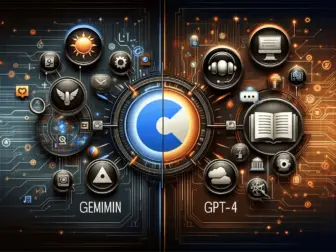Tag - AI Models
AI and Machine Learning, Blog , July 31, 2025 , AI Integration, AI Models, Edge Inference, Model Orchestration, Scene Control, Smart Operations
AI and Machine Learning, Blog , December 27, 2024 , AI Models, ChatGLM, Data Privacy, Enterprise AI Deployment, LLaMA 3, Local Deployment, Private AI, Qwen-7B
Exploring the Landscape of Artificial Intelligence: A Dive into the Capabilities of Modern AI Models
Artificial Intelligence (AI) has become a driving force of innovation, transforming industries and reshaping the way we interact with technology. At the heart of this revolution are AI models, which are sophisticated algorithms designed to perform tasks that typically require human intelligence. These models are not only augmenting human capabilities but also enabling machines to learn from data and experience, making sense of the world in ways that were once considered the sole domain of human cognition.
The spectrum of AI models is vast, ranging from simple machine learning algorithms to complex neural networks that mimic the structure and function of the human brain. Machine learning models, including decision trees, support vector machines, and linear regression, have been widely used for pattern recognition, prediction, and data analysis. These models are trained on a set of data to learn how to make decisions or inferences about new, unseen data.
Deep learning, a subset of machine learning, has taken AI capabilities to new heights. At its core are neural networks, which consist of layers of interconnected nodes, or “neurons,” that process information in a manner analogous to the biological neural networks in our brains. Convolutional Neural Networks (CNNs) have revolutionized image recognition and analysis, while Recurrent Neural Networks (RNNs) and Long Short-Term Memory networks (LSTMs) are particularly adept at processing sequential data, making them ideal for speech recognition and natural language processing.
One of the most remarkable aspects of modern AI models is their ability to learn without explicit programming. Through techniques such as reinforcement learning, AI systems can make decisions, receive feedback from their environment, and refine their strategies over time. This has led to groundbreaking accomplishments in areas like autonomous vehicles, where AI models must navigate complex, unpredictable situations, and in gaming, where AI agents have defeated human champions in complex strategy games like Go and chess.
AI models have also demonstrated exceptional creativity, generating artwork, music, and literature that challenge our preconceptions about the nature of creativity. Generative Adversarial Networks (GANs), for example, pit two neural networks against each other to produce new, synthetic instances of data that are indistinguishable from real data. This technology has implications for entertainment, design, and beyond, allowing for the creation of hyper-realistic images and simulations.
However, the power of AI models comes with significant challenges and responsibilities. The black-box nature of many deep learning models raises concerns about transparency and accountability. Ensuring that AI decisions can be understood and trusted by humans is critical, particularly in high-stakes domains such as healthcare, law enforcement, and finance. Additionally, the ethical implications of AI, including privacy, bias, and job displacement, must be carefully considered and addressed by policymakers, technologists, and society as a whole.
AI models continue to evolve at a rapid pace, with research pushing the boundaries of what’s possible. Innovations like transfer learning, where a model trained on one task is adapted for another, and few-shot learning, which enables AI to learn from a small amount of data, are making AI more flexible and accessible. As we witness the ongoing development of AI, it is clear that these models will play an increasingly central role in our lives, augmenting human intelligence and reshaping the future of technology.



